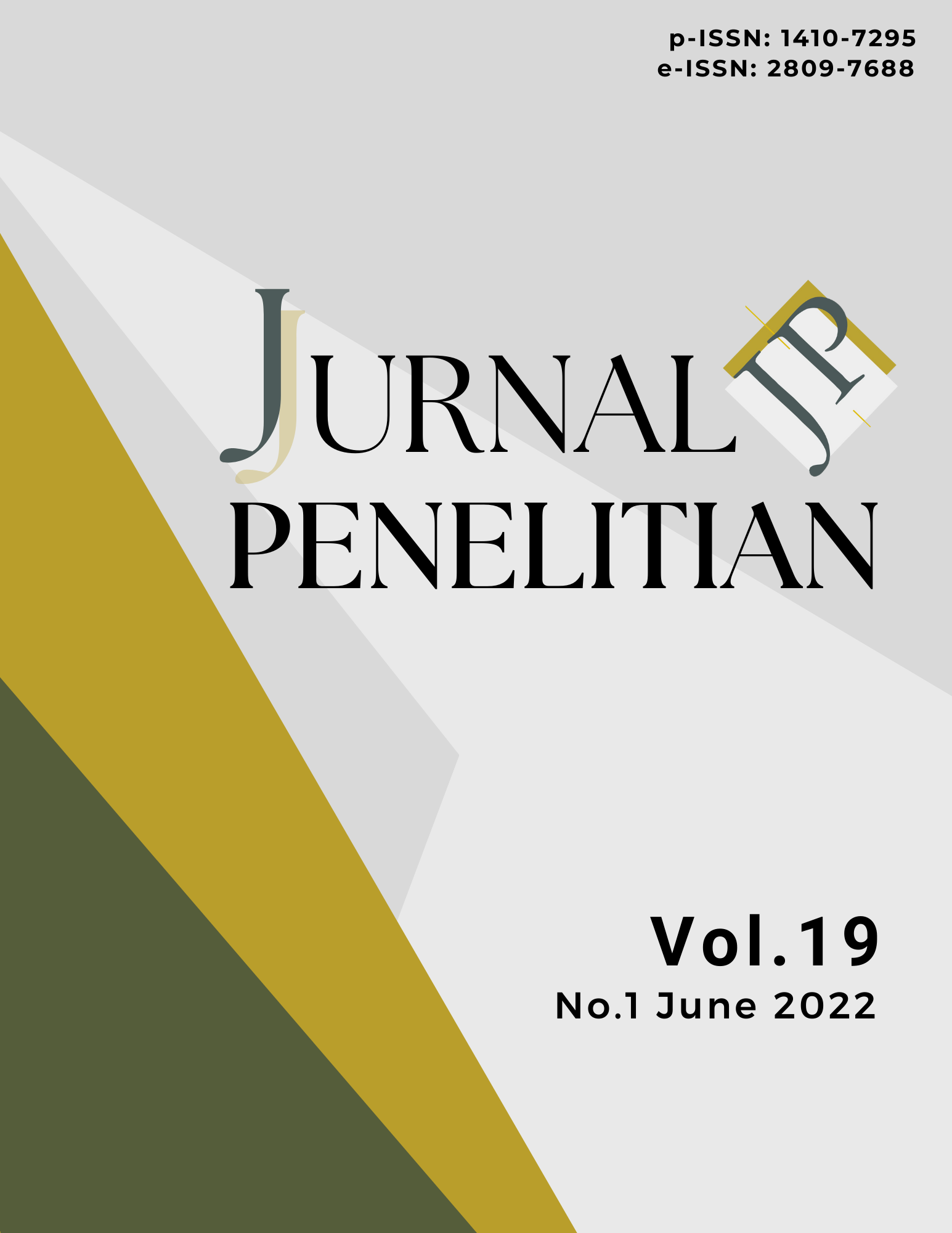Appropriate flood control technology in a local trading area: Case study at Pulosari Kiosk Area in Malang City
DOI:
https://doi.org/10.26905/jp.v19i1.8262Keywords:
Community engagement, Flood, Flood control, Pulosari ChannelAbstract
To date, flood is a problem that often plagues the city of Malang. Floods that occur are mainly caused by poor drainage channels and silting of drainage channels due to people's habits of throwing garbage in rivers. In the Pulosari Kiosk Area of Malang city, the flood was worsened by the capacity of the Pulosari Channel which narrowed due to illegal building. In heavy rain, so much water overflowed into the Pulosari Road, resulting in losses to traders in the area. The purpose of this study was to find a solution to reduce flooding in the Pulosari Channel with the appropriate flood control technology in the area. This study used interviews and questionnaires to investigate the community's response to flood control development efforts. Data analysis was carried out using statistical analysis to obtain a description of the community response to a flood control system implemented by the city government. The research results show that constructing flood diversion channels in the upper area, and educating the community about flood risk management is the best solution in this area to minimize flood losses.
Downloads
References
Cheung, K. S., & Yiu, C. Y. (2022). Public perception of flood hazards in the housing market: A revealed preference study of affect heuristics and availability heuristics. International Journal of Disaster Risk Reduction, 75, 102977. https://doi.org/https://doi.org/10.1016/j.ijdrr.2022.102977
Chowdhooree, I., Dawes, L., & Sloan, M. (2020). Scopes of community participation in development for adaptation: Experiences from the Haor region of Bangladesh. International Journal of Disaster Risk Reduction, 51, 101864. https://doi.org/https://doi.org/10.1016/j.ijdrr.2020.101864
Dangol, N., & Carrasco, S. (2019). Residents’ self-initiatives for flood adaptation in informal riverbank settlements of Kathmandu. International Journal of Disaster Risk Reduction, 40, 101156. https://doi.org/https://doi.org/10.1016/j.ijdrr.2019.101156
Esmaiel, A., Abdrabo, K. I., Saber, M., Sliuzas, R. V, Atun, F., Kantoush, S. A., & Sumi, T. (2022). Integration of flood risk assessment and spatial planning for disaster management in Egypt. Progress in Disaster Science, 100245. https://doi.org/https://doi.org/10.1016/j.pdisas.2022.100245
Fekete, A., Aslam, A. B., de Brito, M. M., Dominguez, I., Fernando, N., Illing, C. J., KC, A. K., Mahdavian, F., Norf, C., Platt, S., Santi, P. A., & Tempels, B. (2021). Increasing flood risk awareness and warning readiness by participation – But who understands what under ‘participation’? International Journal of Disaster Risk Reduction, 57, 102157. https://doi.org/https://doi.org/10.1016/j.ijdrr.2021.102157
Franceschinis, C., Thiene, M., Di Baldassarre, G., Mondino, E., Scolobig, A., & Borga, M. (2021). Heterogeneity in flood risk awareness: A longitudinal, latent class model approach. Journal of Hydrology, 599, 126255. https://doi.org/https://doi.org/10.1016/j.jhydrol.2021.126255
Kiss, T., Nagy, J., Fehérvári, I., Amissah, G. J., Fiala, K., & Sipos, G. (2021). Increased flood height driven by local factors on a regulated river with a confined floodplain, Lower Tisza, Hungary. Geomorphology, 389, 107858. https://doi.org/https://doi.org/10.1016/j.geomorph.2021.107858
Kodoatie, R. J., & Syarief, R. (2010). Tata Ruang Air (I). CV. Andi Offset. https://books.google.co.id/books?id=v_NmfqwW4eQC&printsec=frontcover&hl=id#v=onepage&q&f=false
Lata, L., Walters, P., & Roitman, S. (2019). A marriage of convenience: Street vendors’ everyday accommodation of power in Dhaka, Bangladesh. Cities, 84, 143–150. https://doi.org/https://doi.org/10.1016/j.cities.2018.08.002
Nasrollahpour, R., Skorobogatov, A., He, J., Valeo, C., Chu, A., & van Duin, B. (2022). The impact of vegetation and media on evapotranspiration in bioretention systems. Urban Forestry & Urban Greening, 74, 127680. https://doi.org/https://doi.org/10.1016/j.ufug.2022.127680
Nugraheni, I. L., Suyatna, A., Setiawan, A., & Abdurrahman. (2022). Flood disaster mitigation modeling through participation community based on the land conversion and disaster resilience. Heliyon, e09889. https://doi.org/https://doi.org/10.1016/j.heliyon.2022.e09889
Praesri, S., Meekun, K., Lee, T. J., & Hyun, S. S. (2022). Marketing mix factors and a business development model for street food tourism. Journal of Hospitality and Tourism Management, 52, 123–127. https://doi.org/https://doi.org/10.1016/j.jhtm.2022.06.007
Rauter, M., Kaufmann, M., Thaler, T., & Fuchs, S. (2020). Flood risk management in Austria: Analysing the shift in responsibility-sharing between public and private actors from a public stakeholder’s perspective. Land Use Policy, 99, 105017. https://doi.org/https://doi.org/10.1016/j.landusepol.2020.105017
Sedyowati, L., Chandrarin, G., Nugraha, G. I. K., & Nugroho, B. (2020). Economic efficiency of community-based flood risk management: An empirical study from Indonesia. Journal of Water and Land Development, No 46, 200–208. https://doi.org/10.24425/jwld.2020.134214
Sugiantiningsih, A. A. P., Weni, I. M., Hariyanto, T., & Sedyowati, L. (2019). Enhancing environmental quality through community participation based on traditional rules: empowering the new role of Pecalang in Bali. Journal of Southwest Jiaotong University, 54(5), 1–6. https://doi.org/10.35741/issn.0258-2724.54.5.16
Tanuwidjaja, G., Wiyono, A. E., Wibowo, A., Gerry, G., Shinata, L. M., & Raynaldo, R. (2016). Redesigning the traditional food kiosk based on local knowledge, case study: Siwalankerto District. Procedia - Social and Behavioral Sciences, 227, 560–567.
https://doi.org/https://doi.org/10.1016/j.sbspro.2016.06.115
Wahyuni, I. A. M., Weni, I. M., Hariyanto, T., & Sedyowati, L. (2021). Community enhancement of the environmental quality of riverbank settlements : A case study of Tridi Kampong, Indonesia. Journal of Water and Land Development, 49, 204–212. https://doi.org/10.24425/jwld.2021.137113
Winayanti, L., & Lang, H. C. (2004). Provision of urban services in an informal settlement: a case study of Kampung Penas Tanggul, Jakarta. Habitat International, 28(1), 41–65. https://doi.org/https://doi.org/10.1016/S0197-3975(02)00072-3
Downloads
Published
How to Cite
Issue
Section
License
Authors who publish in this journal agree to the following terms:
- Copyright of the published articles will be transferred to the journal as the publisher of the manuscripts. Therefore, the author confirms that the journal has managed the copyright.
- Publisher of Abdimas: Jurnal Pengabdian Masyarakat Universitas Merdeka Malang is University of Merdeka Malang.
- The copyright follows the Creative Commons Attribution-ShareAlike License (CC BY SA): This license allows to share, copy, and redistribute the material in any medium or format, adapt, remix, transform, and build upon the material, for any purpose, even commercially.


